The Sonora Phonograph was known by
its Sonora Bell logo and the phrase "Clear as a Bell."
Other slogans included "The Instrument
of Quality" and "The Highest Class Talking Machine in the World."
Send over a Sonora Portable
to the cheer up those boys "behind the lines in Picardy."
Leslie's Weekly, June 1918
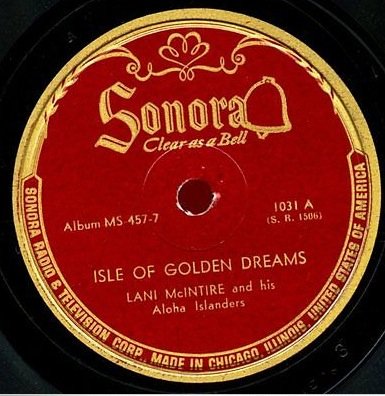
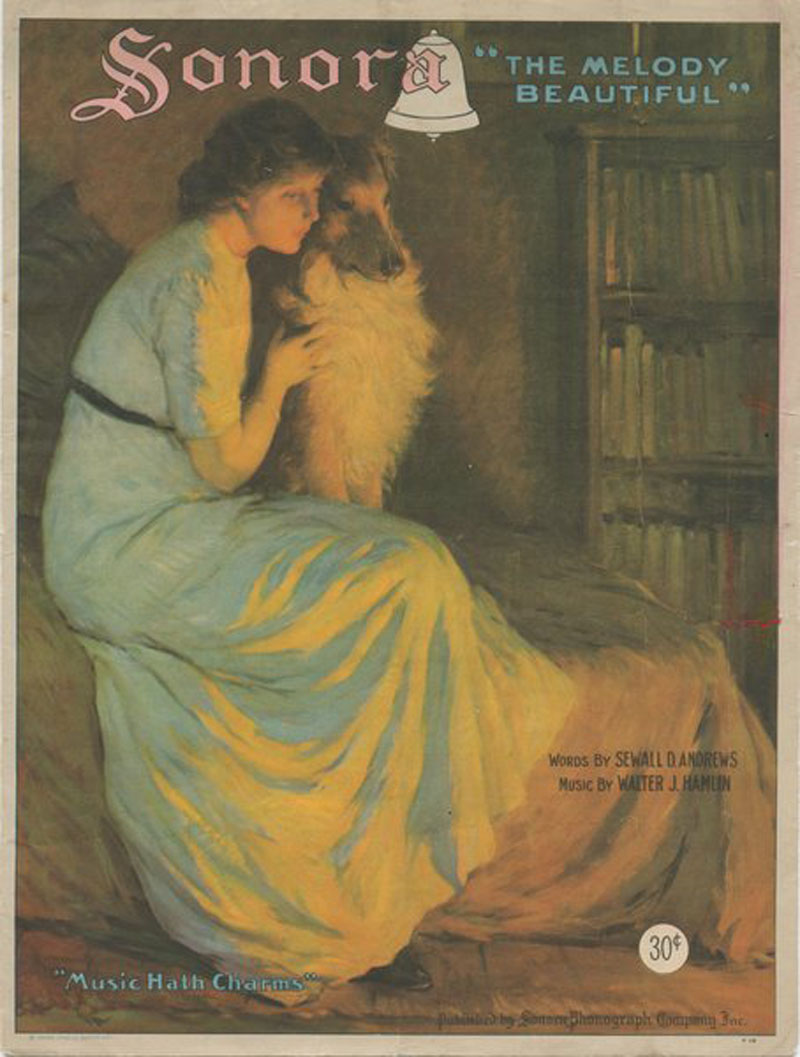
1920 Sheet Music

Ad on back of 1920
Sonora Sheet Music
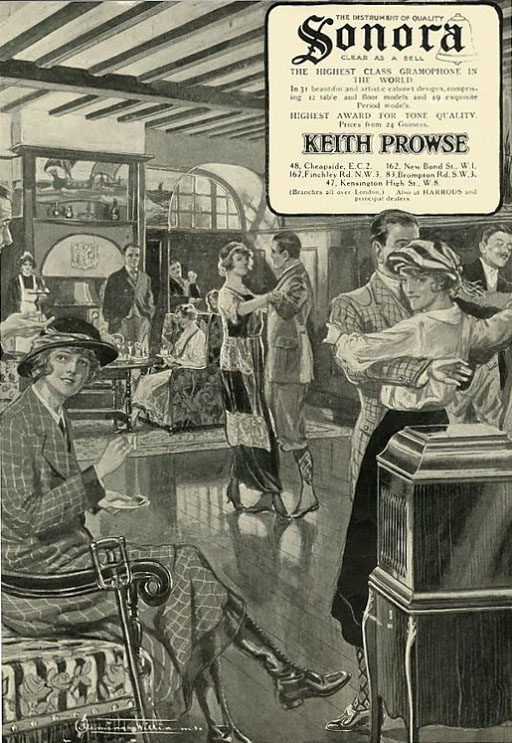
1920
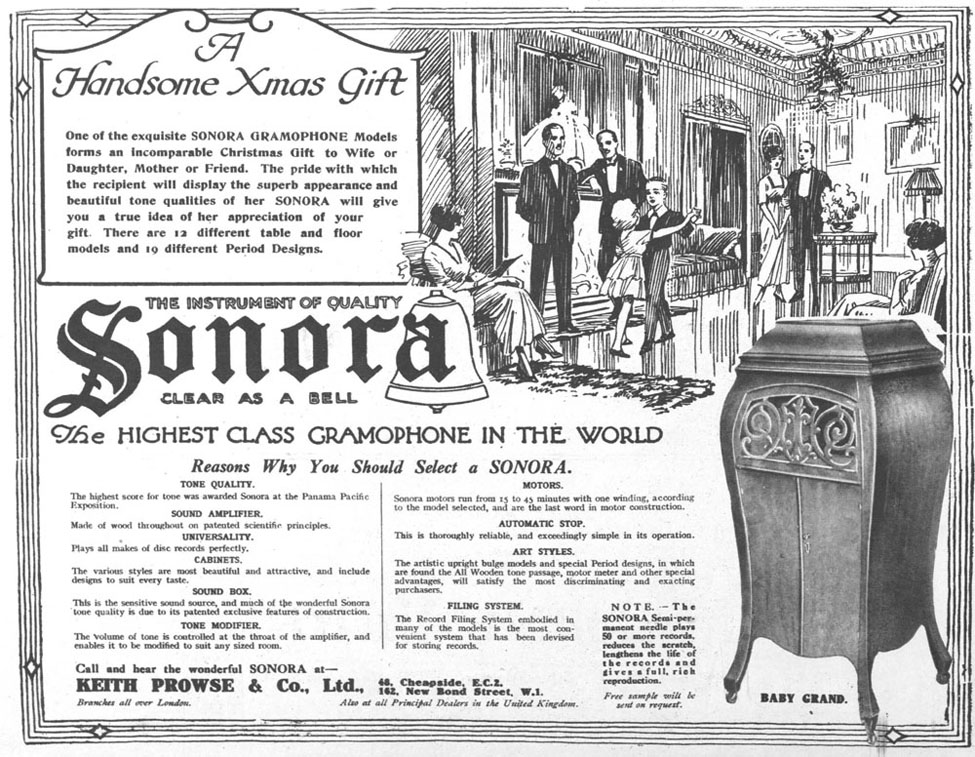
1920

Courtesy Collector's
Weekly
Trade card for Sonora Phonograph
circa 1919, wealthy couple on the front steps of their home -
card opens to their living room featuring a Sonora Phonograph.
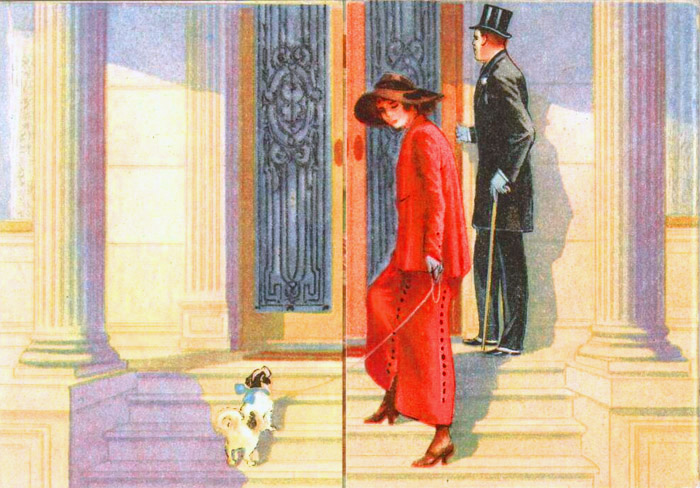
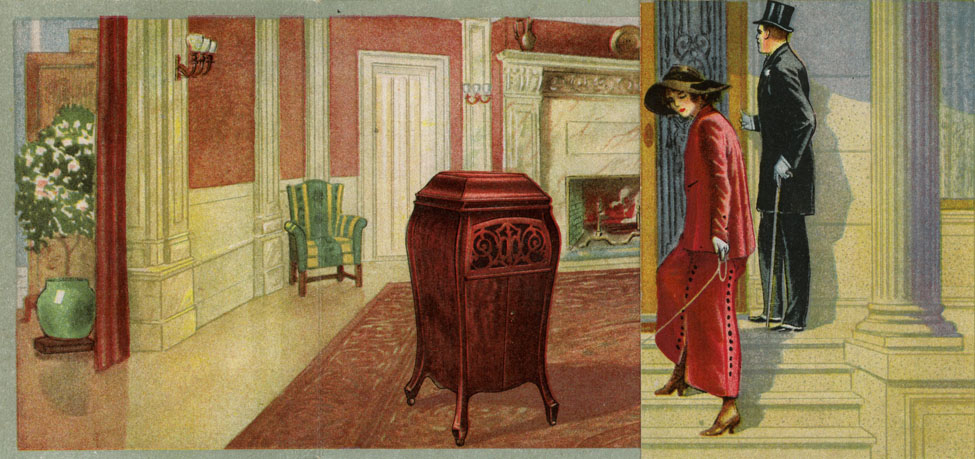
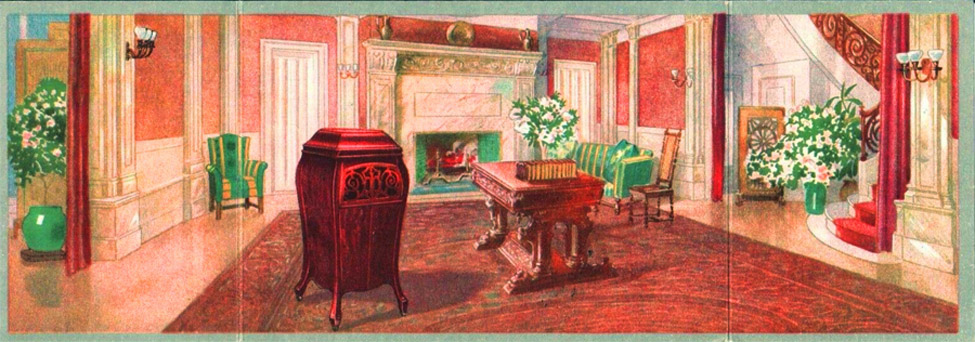
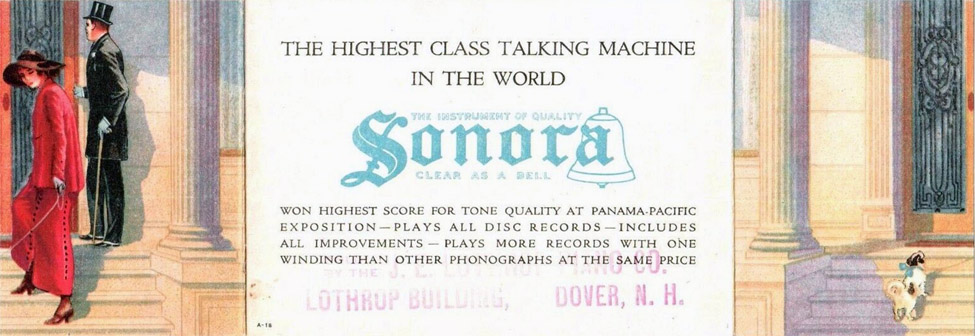
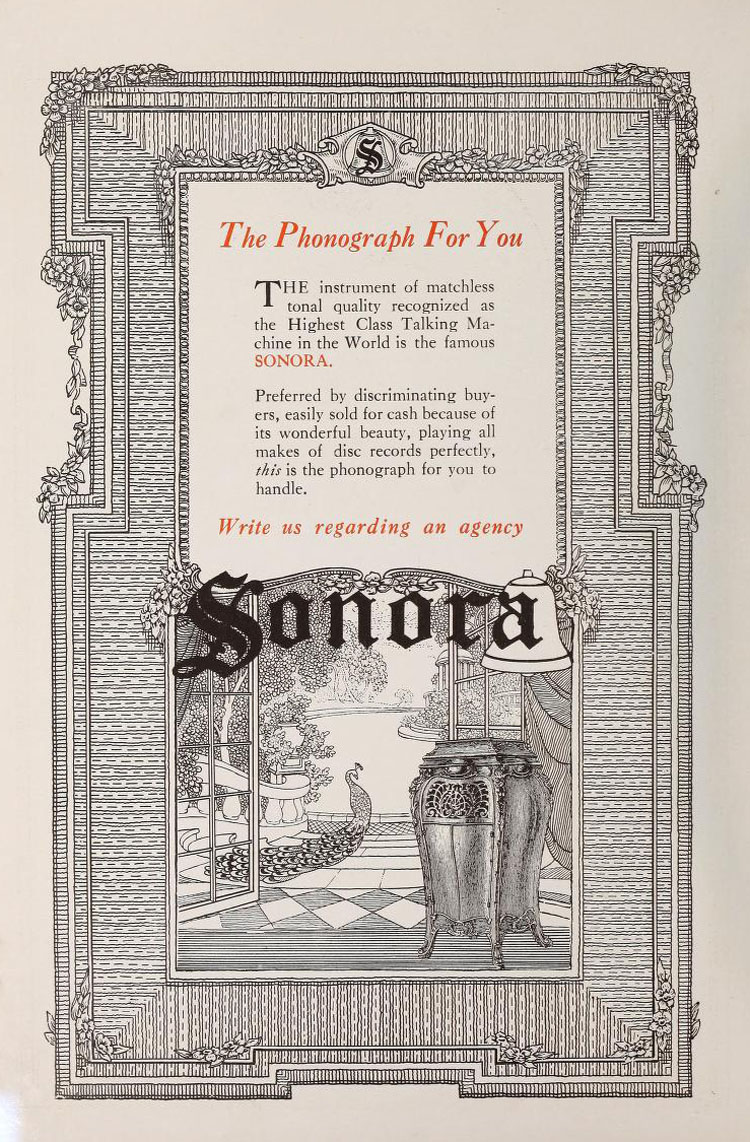
"The Highest
Class Talking Machine in the World is the famous SONORA."
The Talking Machine World, February 1919
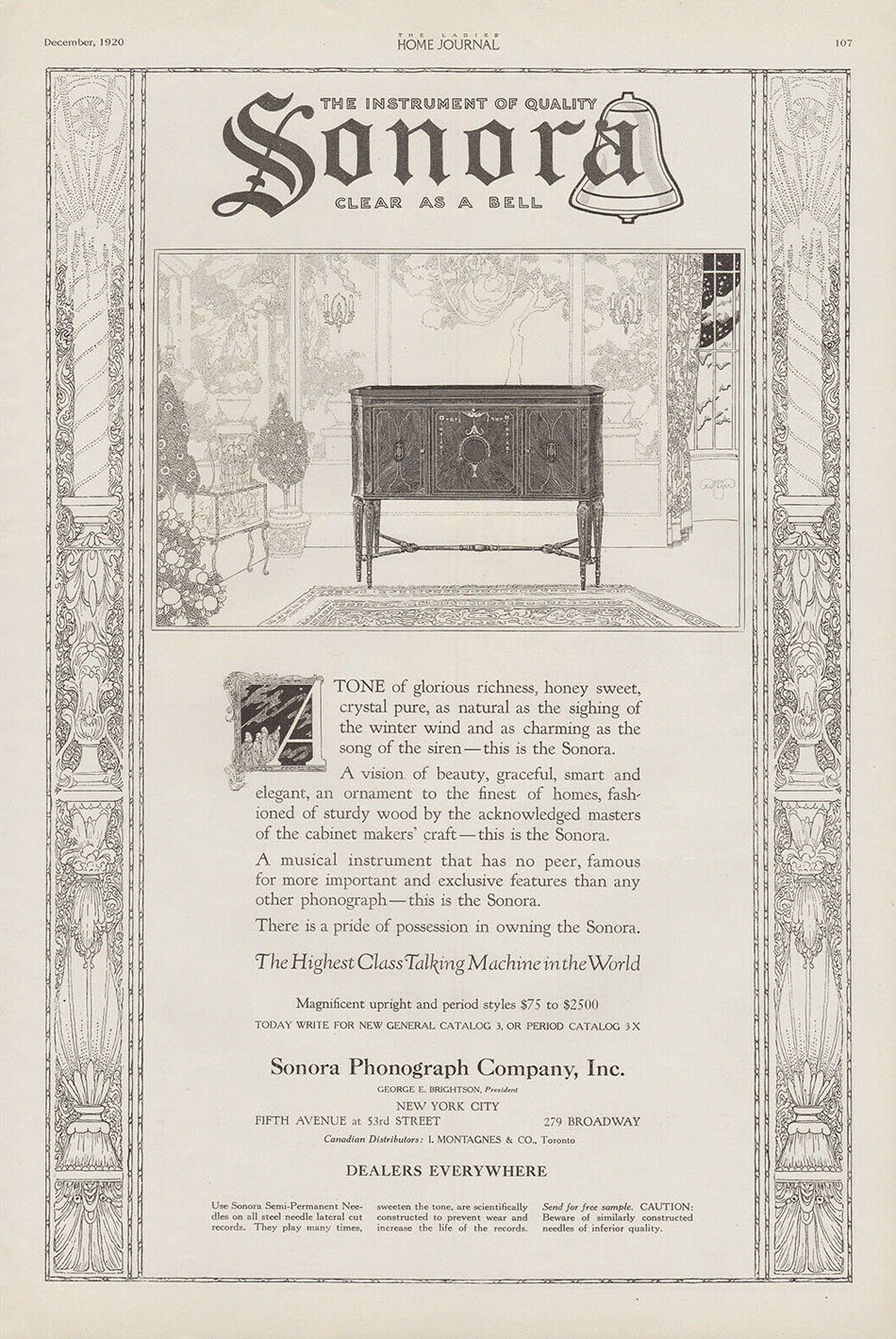
"Clear as a Bell"
- "as natural as the sighing of the winter wind and as charming
as the song of the Siren..." The Ladies' Home Journal, December
1920

Courtesy The Smithsonian
Libraries
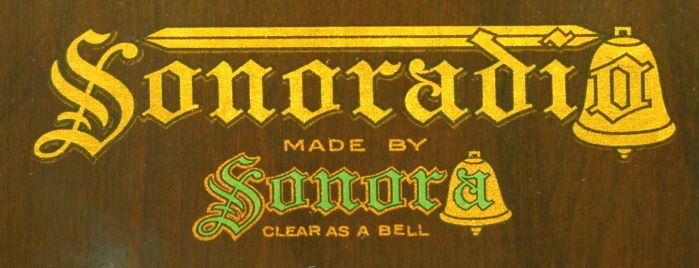
Courtesy of Radiolaguy.com
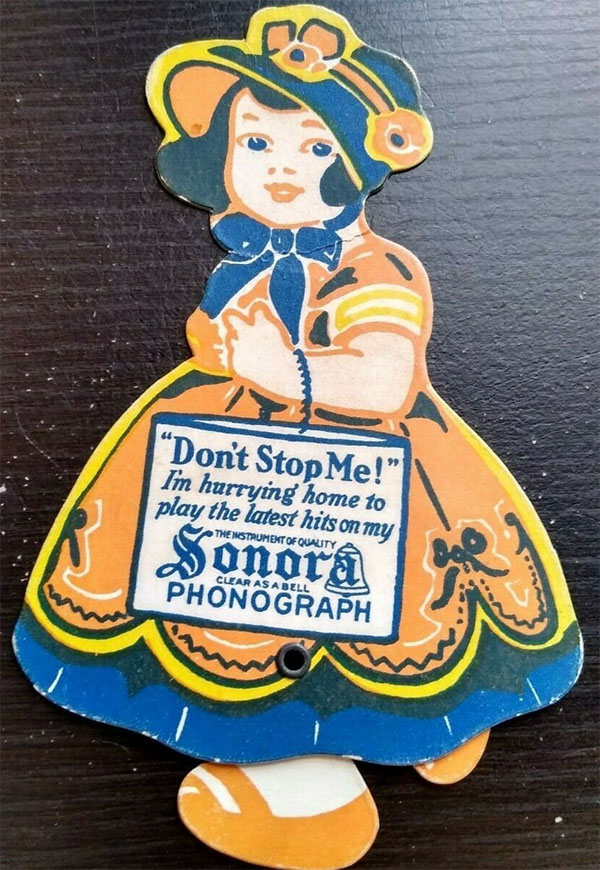
Sonora "Walking Doll" advertising
piece (legs move as if walking), 3.5" x 6.5", 1922 (PM-1226)

The Talking Machine
World, September 1922

Sonora Dealer Brochure
ca. 1925
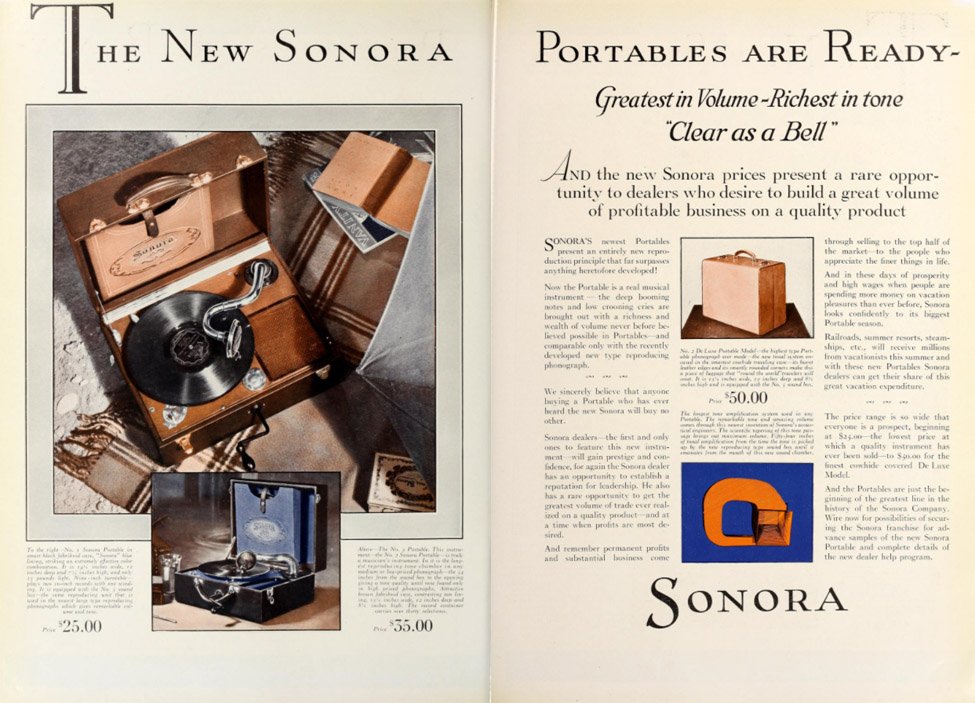
"Clear as a
Bell" Sonora Portable, The Talking Machine World,
March 15, 1927
Four page Ad for Sonora
Portable, The Talking Machine World, April 15, 1927 presenting
"three new Portables that far surpass anything heretofore developed."
"Greatest in Volume -- Richest in Tone"
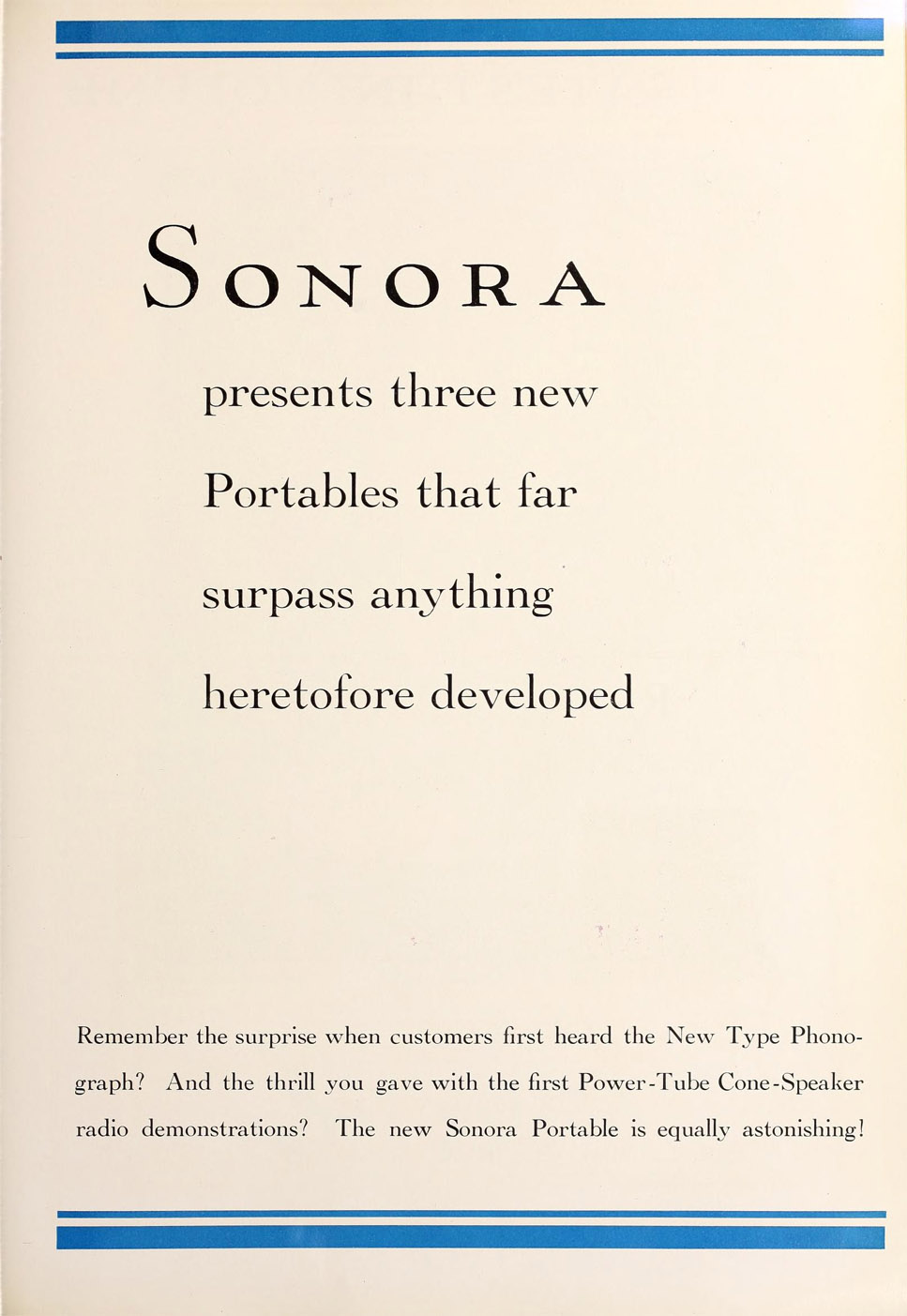
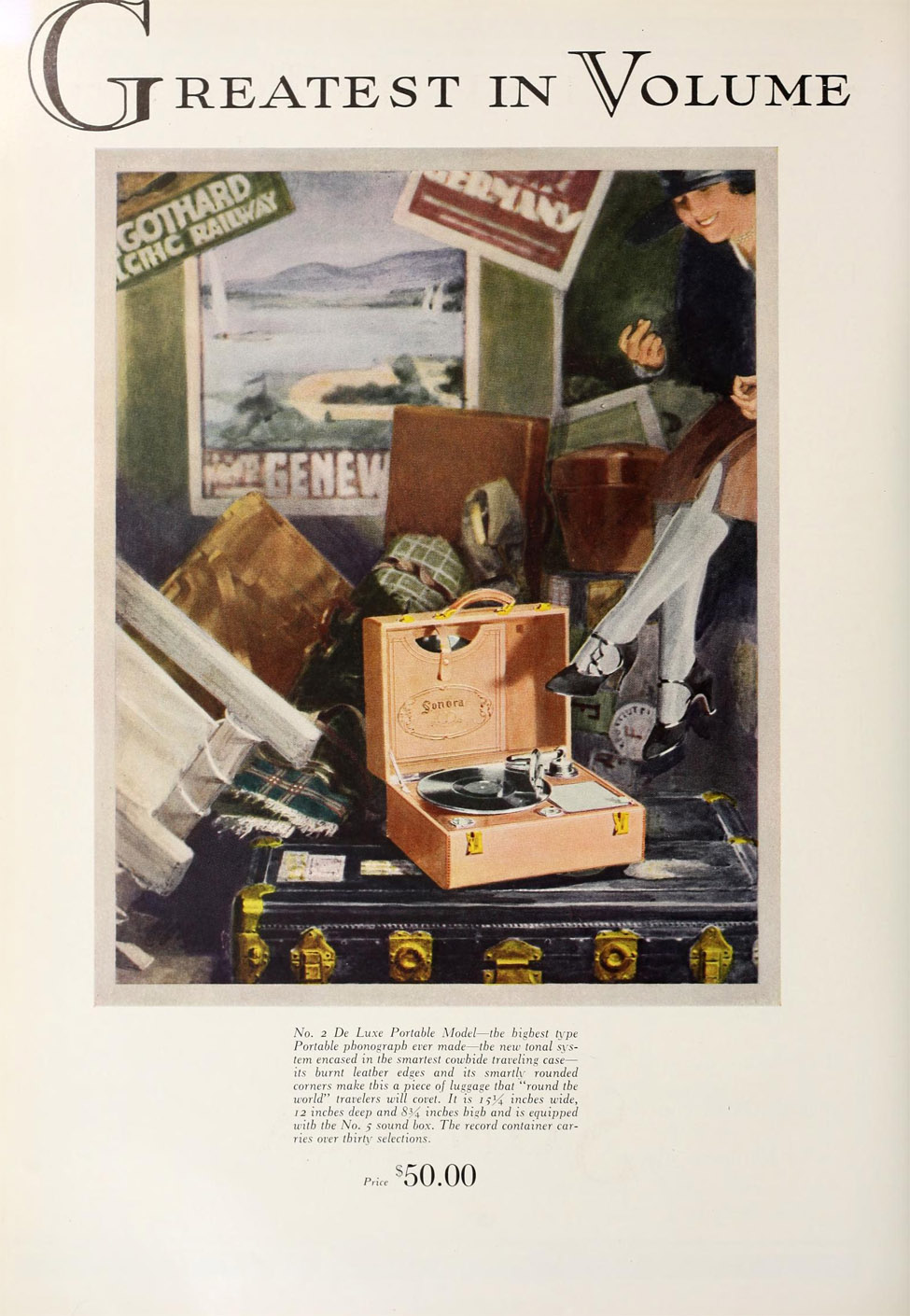
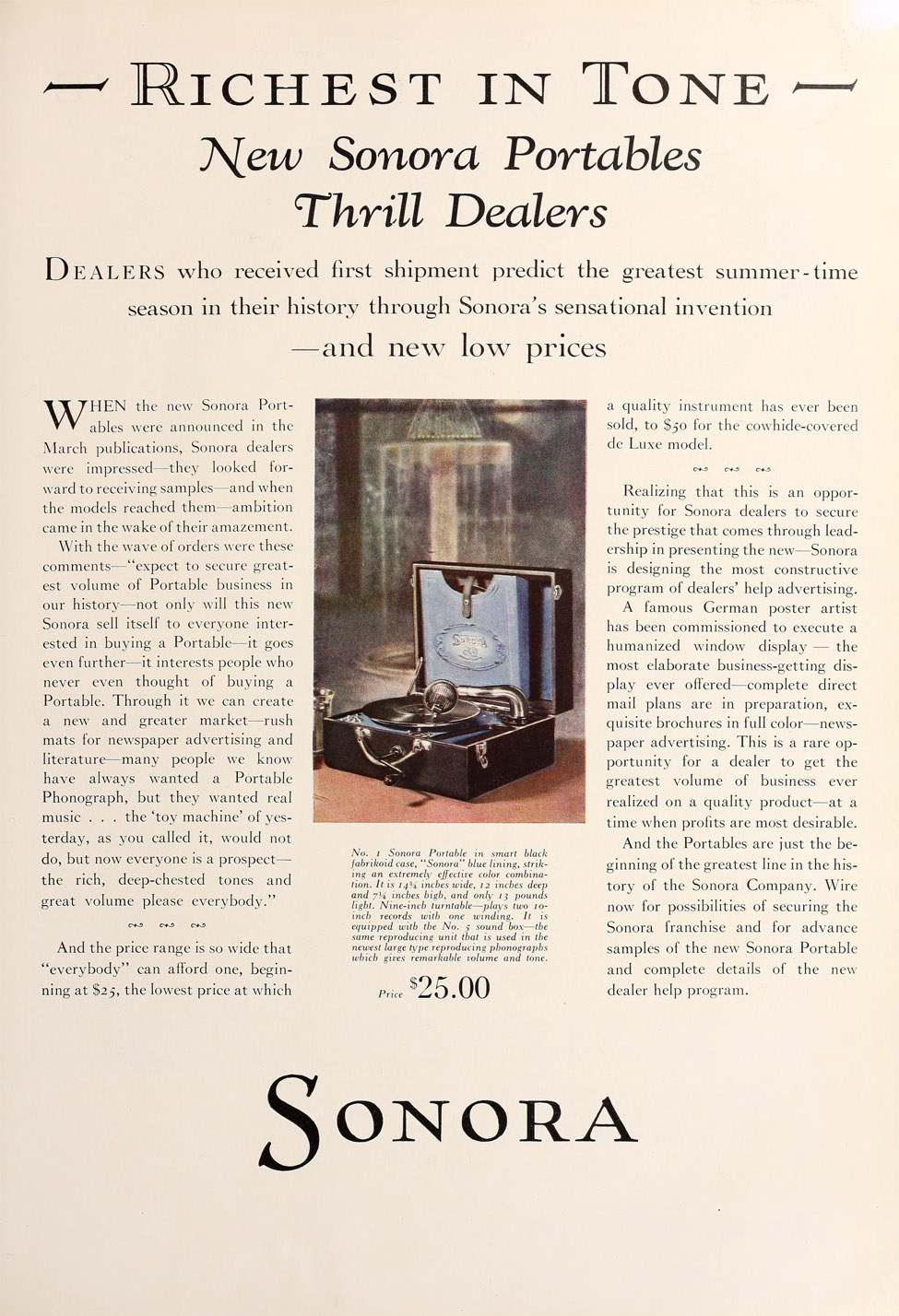

Sonora Portable,
The Talking Machine World, April 15, 1927
The following information
is courtesy of the RadioMuseum
Sonora Phonograph Co., Inc.;
New York, N.Y. 1913 - 1930
Predecessor: Sonora Chime Company
started making two-movement chime clocks around 1900.
Sonora Chime Company at 5 Cedar
St., New York City, patented its system of chiming bells to be
put into its clocks beginning 1908. Seth Thomas aquired the patent
rights in 1908. The Sonora Chime Company was reincorporated in
February of 1913 as the Sonora Phonograph Company by its founder,
George Brightson. It was located at 78 Reade St., New York City.
Sonora was a large phonograph manufacturer. Around 1924 the model
line was extended to radios, which were not produced in its own
plants, but bought from Ware, Wireless Specialty, Splitdorf, or
American Bosch. The successor of "Sonora Phonograph" is Sonora
Radio & Telev., Corp.; 325 North Hoyne Avenue, Chicago.
Quote from the Public Libraries of
Saginaw, written by Anna Mae Maday:
"The Sonora Phonograph Company
operated in Saginaw between 1919 and 1930, but cabinets for the
New York company had been made in Saginaw for a number of years.
Sonora used the "bulge-line" cabinet patented in 1911 by Jon Herzog
in making their phonographs.
John Herzog was born in Frankenmuth
in 1867. As a young man he worked in furniture factories in Saginaw
and Grand Rapids before going to Europe for further experience.
With financial backing he established the Herzog Art Furniture Company
on South Michigan Avenue. In 1923 the Sonora Phonograph Company
of New York officially merged with Herzog Art Furniture of Saginaw.
At the Panama-Pacific International
Exhibition in San Francisco the Sonora phonograph was awarded a
gold medal for its quality. Radios became popular in the 1920's,
and the company turned to the manufacture of radio cabinets. In
1929 the New York investors obtained complete control, and then
went bankrupt in 1930. Sonora workers believed that if Jon Herzog
had been in charge, the company would have survived the depression.
In summer 1927 the company's headquarters
moved to Saginaw. Sonora had a branch in Oakland, California, that
later became Magnavox.
Sonora was one of the companies
that were allowed to exist by the big three (Victor, Edison and
Columbia) to avoid threats of a trust suit. Because Sonora had paid
a lot of money in royalties on patents held by the big three on
a per unit basis, it could only compete with them on their high-end
machines..."

Phonographia